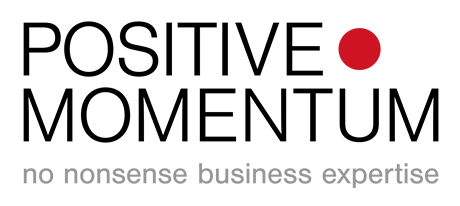Individuals, teams, organisations (even countries) that grow consistently have one common factor – they are brilliant at change. They constantly confront their weaknesses, they recognise new realities early, they take risk and they let go of the past.

Thriving
Love ’em or loath ’em but this is Amazon. $15bn year-over-year sales growth in 2018, a willingness to try new things and rapidly abandon anything that doesn’t work, proves they are truly thriving.

Surviving
Many organisations and people are continuing to grow but are dissatisfied with the degree of growth. This community will often blame external factors – trade wars, Brexit, weather, etc.
Whilst of course these can all be factors the inconvenient truth is that change is very likely being resisted in the deluded belief that the strategy/proposition/people/ systems/skills are all fine as they are. This complacency can foretell the next uncomfortable chapter…

Expiring
Once change resistance has been accompanied by no growth a vicious circle of doom can so easily follow. Whether this is the demise of a previously promising career path or the final manifestation of strategy mistakes of previous years, only radical (and probably painful) intervention will deliver any chance of recovery.
Here in the UK, HMV is just the most recent of sad examples.

Reviving
Change can be tough but it doesn’t have to be. Develop your skillset early enough and you will avoid the perils of the next re-org. Dispense with products before their sell by date (E.g. IBM sold its laptop business way back in 2004) and you might just catch the next wave earlier.
The difficult thing for many to accept is the lag to growth. The reality is that a period of no-growth, maybe even decline, often accompanies this period.
1. Ask customers/staff questions that actively encourage criticism.
Enough already of the self-serving, overly-leading questions that tell us whether someone would recommend us to a friend! In my last executive role, the final section of my direct reports monthly report template was titled “the top 3 things that Matt (me) did in the last month that irritated you”. Nil returns were not allowed and in fact I suspect choosing only a top 3 was probably quite difficult…
2. Build, refresh and share your change intentions regularly.
Whether just for you personally, for your team or for a whole organisation publishing your change intentions is vital. Not just occasionally (long after everyone knew there was a problem anyway), not annually just after the ‘strat planning offsite’ but continuously including (maybe even especially) when growth looks great. ‘Mend the roof when the sun is shining’ might be a cliché but it’s a very apt one. Keep your list of change intentions short and believable – as always, 3 is better than 30.
3. Only employ managers who can imagine their role being made redundant.
Some of the most change resistant people can be those in management roles who feel they’ve fought for their position and will repel anything that looks like it might put their title at risk. Either retrain or replace change resistant managers. Change managers ask great questions about the future, they recruit as much for the needs of tomorrow as today, they adapt quickly to unexpected bends in the road and they rarely bleat about how frantic everything is. Sure, they are hard to find but they are out there if you look hard enough.









